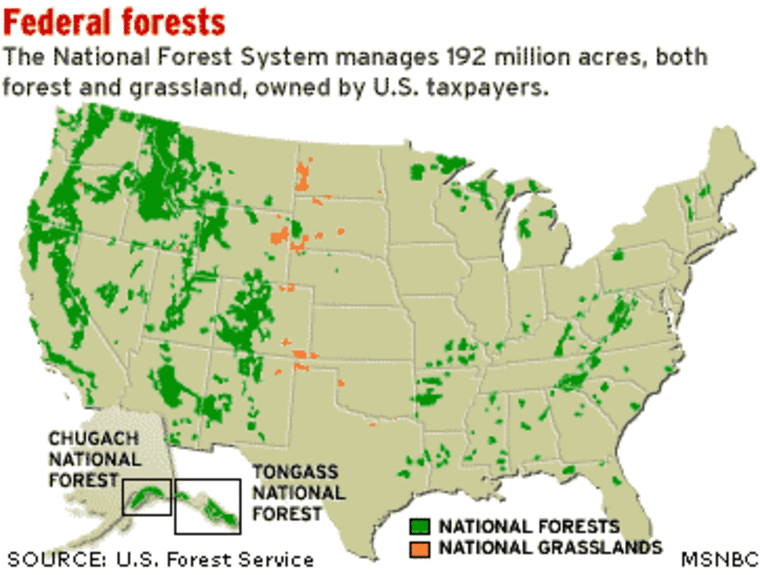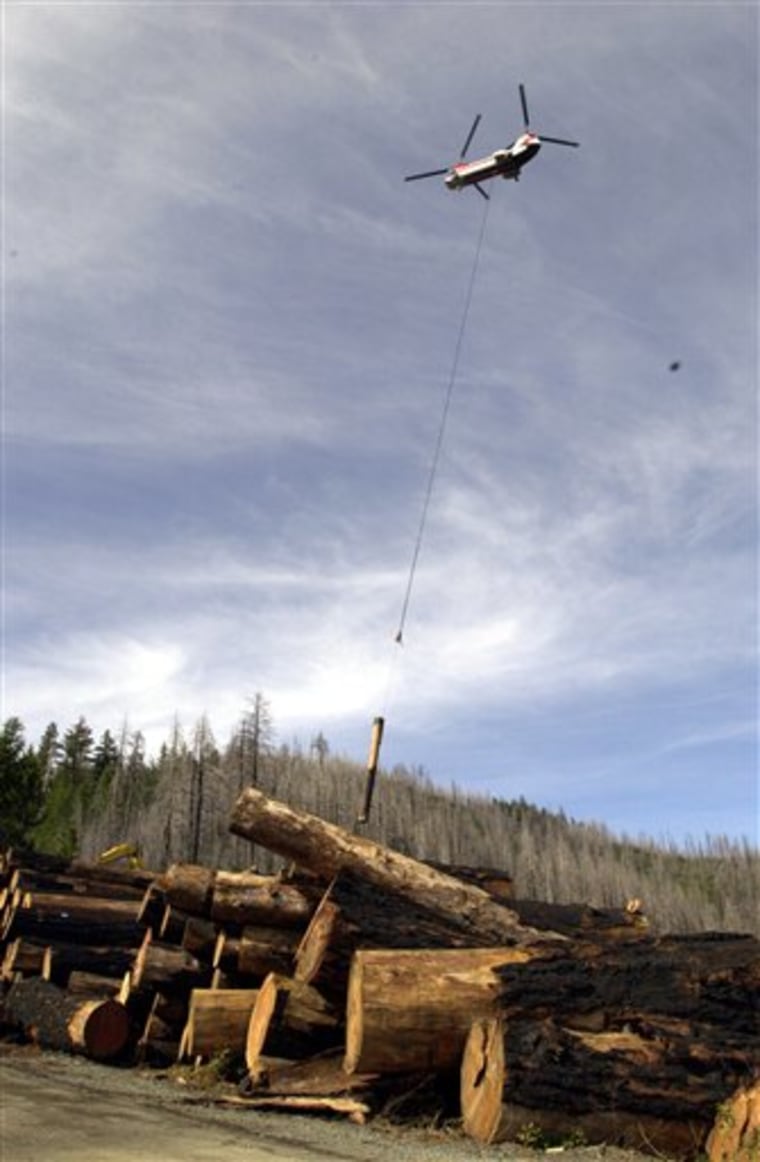A court's reinstatement of a ban on new roads on remote national forest land hasn’t ended legal battles over access to timber stock.
An Oregon timber company appealed the ruling Friday, saying it should be able to continue logging trees burned in a 2002 wildfire in the Rogue River-Siskiyou National Forest.
Silver Creek Timber owner John West said he had no opinion on future logging in roadless areas, but felt he should be allowed finish the salvage project.
Agriculture Undersecretary Mark Rey, who oversees the Forest Service, said federal officials are analyzing Wednesday's ruling by U.S. District Judge Elizabeth Laporte in San Francisco. The decision overturned a Bush administration's rule that potentially opened the land to development.
Rey said the administration disagrees with Laporte's conclusion that the administration violated federal laws by not doing an environmental analysis and evaluating the potential impacts on endangered species. He said the intent was always to do those evaluations on a state-by-state basis.
The administration will comply with the ruling, Rey said. But states can still petition Agriculture Secretary Mike Johanns for individualized management plans as amendments to the Clinton-era rule that was reinstated.
"If a state is interested, we'll continue to write a state-specific rule," Rey said.
Rey, however, said he expects more lawsuits. He said the six federal judges who have weighed in on the 2001 road-building ban have split evenly.
"I guess maybe what we need is a tie-breaker," Rey said.
Supreme Court case?
The ultimate referee could be the U.S. Supreme Court, said Mark Squillace, director of the University of Colorado's Natural Resources Law Center.
"What seems clear is that this is going to remain in the courts, likely through the end of the Bush administration," Squillace said.
The Bush administration gave governors 18 months to petition the agriculture secretary to protect the forest land when it replaced the road-building ban last year.
Idaho Gov. Jim Risch said Thursday that he will still submit a proposal for his state's 9.3 million acres of roadless areas that would prohibit road-building on 3.1 million acres and allow some development on the rest.
Wyoming Gov. Dave Freudenthal pledged to try to revive his state's lawsuit that resulted in throwing out the 2001 policy that banned roads on 58.5 million acres, most of it in the West.
The roadless rule was passed in the waning days of the Clinton administration after more than two years of public hearings and 1.6 million comments. About a third of the country's 192 million acres of national forest lands was affected.
Some of the areas protected as roadless have trails and roads, but generally are prized for their pristine qualities and are considered important as wildlife habitat, watersheds, scenic and recreation areas.
Court challenges quickly followed. The 9th U.S. Circuit Court of Appeals upheld the rule in 2001.
Two years later, U.S. District Judge Clarence Brimmer in Cheyenne, Wyo., overturned the rule, saying the road ban illegally designated wilderness. Only Congress can set aside wilderness areas.

Who decides?
The Bush administration approved a policy last year that potentially opened the land to logging, road-building and other development. Five states have submitted petitions asking that all their roadless areas be protected: California, New Mexico, Virginia, South Carolina and North Carolina.
Earlier this month, a task force appointed by the Democratic-controlled Colorado Legislature and Republican Gov. Bill Owens recommended banning development on most of the state's 4.1 million acres of roadless forests. Exceptions included removing 8,000 acres leased by ski areas and about 70,000 acres for a coal mine as long as operations continue.
Jim Sims, executive director of the Denver-based Western Business Roundtable, said it makes sense for state and local officials and residents to have a say in managing the large tracts of federal land, some of which contain oil and gas and other minerals.
"The people near the land do a better job and have greater stake in the right kind of conservation," Sims said.
Eddie Kochman, a member of the Colorado roadless task force, said he agrees that local input is important. Kochman, a retired state fisheries manager, said "90-percent-plus" of Coloradans who commented said the roadless areas should be left undeveloped.
Kochman added, though, that any management plans must recognize the fact that national forest lands belong to all Americans.
"That's why we created the Forest Service, the Bureau of Land Management, the National Park Service _ to give some level of consistency to manage those lands to the benefit of every citizen in this country," Kochman said.
